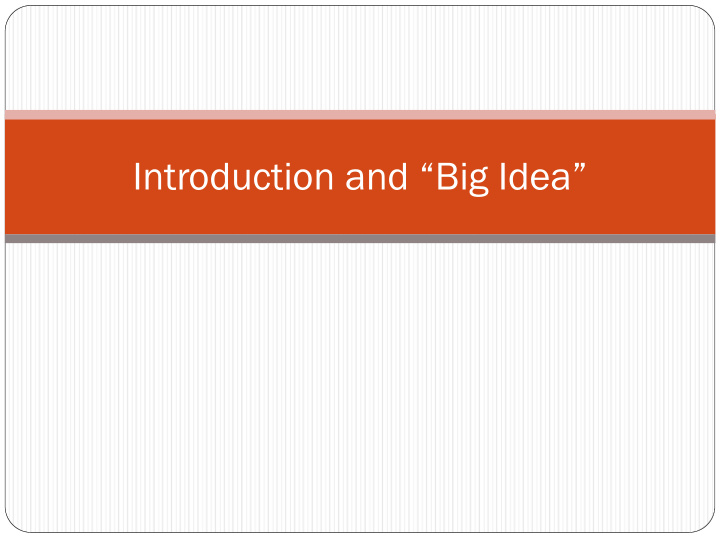



Introduction and “Big Idea”
What are… Numerical M Methods ? ? Numbers in a computer (and how computer understands these numbers) • Mathematical model o “algorithms” derived from math ideas to solve equations numerically • Complexity of the problem o Slow vs fast • Accuracy o Accurate vs inaccurate Method = Math + Complexity + Accuracy
Why is this course important? 1. Understanding and reconstruction of known problems o Natural disasters o Catastrophic failures Explosion of 2. Prediction of unknown situations Ariane 5 in 1996 o Weather conditions o Behavior of new materials 3. Optimization of existing problems o Image recognition o Reduce fabrication costs
Goals for this course • Understand how numbers are represented in the computer. • When developing code, you will likely run into numerical errors. What are the sources of these errors? • How can you avoid numerical errors? • How can you choose a suitable algorithm for a given application? • Use existing libraries to solve real applications.
(Numerical) Method = Math + Complexity + Accuracy Mathematical model: What equations can we use to represent our problem? Accuracy: Are we getting accurate results? Why is the method not giving me the correct solution? Complexity: How long does it take to solve this problem? Is it cost-effective?
Your entire CS 357 semester in a few slides! Are you ready?
Accuracy • Why a numerical method might not give the right answer? Ø Computers have finite representation of numbers Ø Sometimes the “right answer” cannot be represented in a finite way Ø Example: 𝜌 = 3.1415926535897932384626433832795028841971…
Demo: Waiting for the number 1 What is going to happen when we run this code? A. Code will stop after printing 11 values for x B. Code will stop after printing 10 values for x C. Code will not stop D. Code will not start
Monte Carlo Methods Texas Holdem Game: we would like to determine the probability of winning of a given starting hand Physical experiment vs Numerical experiment
Numerical Experiments • What do we want to know about a numerical experiment? 1. What questions are we attempting to answer? 2. What is the outcome of the experiment? 3. Is it repeatable? 4. Is the answer accurate? 5. How long will it take? Time vs accuracy trade-off Question: Is running this method (with a certain accuracy) a good use of our time and/or computer resources?
Complexity How long does it take to solve a problem? Given A, B matrices of size 𝑛 ×𝑛 , the matrix-matrix multiplication 𝐵 & 𝐶 takes 𝜐 seconds. How long does it take to perform 𝐷 & 𝐸 , matrices of size 2𝑛 ×2𝑛 ?
Linear system of equations: Image processing How can we use linear operators to create blurred images? How can we do the inverse process? Image credit: https://datacarpentry.org/image-processing/
Markov chain Page Rank Word prediction
Nonlinear system of equations Inverse kinematics: find the angles that make the robotic hand grab a chocolate candy!
Optimization Numerical simulations to find optimized bridge designs Bridge design (high school projects) http://cs357-stu-01.cs.illinois.edu/
Linear Least Squares Dataset containing the characteristics of cells for several patients. Can we make predictions if cells are benign or malignant?
Principal component analysis Sometimes our dataset has too many features? How can we reduce the feature space and still keep the most important information?
Recommend
More recommend